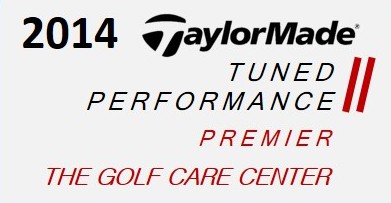Irons: The General Fitting Process
During the fitting process, decisions are made which are in the player's best interest, based on three beliefs:
- Every golfer can and should improve.
- Golfers will learn to adapt themselves and their swings to have their clubs hit the best possible shots they can. In developing proper specifications through our fitting process, we ensure that these adaptations occur in a positive way, mechanically and fundamentally.
- Regardless of skill level, golf clubs should possess some degree of forgiveness.
Specifications for Iron Fitting
We will assess the player first to determine club specifications, such as:
- Club Length. This length is then confirmed dynamically for solid strike and shot dispersion.
- Grip Size and Taper. Proper grip size and taper facilitates holding the club with the least amount of pressure for maintaining control. The wrists can thus hinge the shaft more on plane and control the club face angle.
- Shaft Flex and Weight. Clubhead speed is a starting point for flex. In a perfect world, given a wide arc and an even load exerted on it, clubhead speed would determine shaft frequency. But from an engineering perspective, the shaft is a spring, and we will measure loads exerted on it to optimize acceleration and momentum.
- Club Lie Angle.
Important Note: For more details and commentary on the above, please go to the section below entitled "Fitting Specifications Details".
Apply the Fitting Results
- Wade Heintzelman will then go through a virtual flow chart to determine which of the major club manufacturers could build a quality product at the player's specifications.
- Of the companies capable of building, he will access which companies offer the best combination of design, shaft offering, etc., to provide the best possible club the player could have.
- After discussing player preferences, and reaching a decision as to manufacturer, model, and grip texture preference, Wade will write a precription in the companies "language" for an order to be placed and for clubs to be properly built to exacting specifications.
Fitting Specifications Detail
Using iron fitting as a baseline, the following are further details about the club specifications and other factors that we focus on during the fitting process:
Club Length
Using height, shoulder width, torso length, leg length and thickness, arm length, and hand size and shape, we statically calculate what length of club will give the player his or her best opportunity to set up in proper posture. This posture allows weight to move in optimal directions, resulting in better stability, balance, and swing fundamentals.
Grip Size and Taper
Proper grip size and taper facilitates holding on to the club with less grip pressure and hinging of wrists. As a result, the shaft stays on plane and provides a better release.
Shaft Flex
The shaft is "engine" that drives the club and most important component of the golf club. The secret to a sucessful shaft fitting is a great "feel", energy transfer and resulting trajectory, distance control, and tight shaft dispersion.
- To determine the proper shaft flex, we use clubhead speed as a starting point.
- Next, we measure the load pattern on the shaft throughout the swing as well as the player's tempo.
- We then determine, from an enginneering perspective, how to apply the greatest force in the most efficient manner.
- We must then evaluate the shaft flex profile and the resulting ball flight profile produced.
Shaft Weight
Shafts will be matched to the player by his or her swing tempo is relation to the length of the swing arc and the load exerted on the shaft. The following is noteworthy:
- Shafts vary from 40 to 150 grams--a huge difference in weight.
- Tempo is dictated by three variables: personality, the muscle groups producing the speed, and the player's strength.
- The benefits of the properly weighted shafts are:
- The clubs "feel" good.
- Better timing--the arms swing in conjunction with the body.
- The clubface stays square to its travel path for a longer period of time, resulting in a maximum backspin and minimum sidespin.
Lie Angle
The golfer is tested for his "dynamic lie angle" at impact. This
angle is then compared to what the ideal lie angle would be if the
shaft were on plane at impact. We determine the proper lie angle as
that angle which gives swing relief without impeding the player's
abiilty to improve. In the final analysis, lie angle must be
determined on an individual basis, as it immediately influences ball
flight and it is therefore very important for it to be correct.
Technology
From a technological standpoint, we look deeper into the golf club and determine what additional features we can employ in a club of the player's specifications, in order to apply a greater force in a more efficient manner.
Launch Profile
We measure a player's ball speed, launch angle, and spin rate--and compare them to the optimum launch angle and spin rate for their given ball speed. This analysis places every golfer in one of four profiles:
- Low launch, low spin
- Low launch, high spin
- High launch, low spin
- High launch, high spin
Our goal is to have this profile optimized as the golfer improves, so that he or she sees the result of a better ball flight.
This analysis also helps us determine the "longest" iron in the
set that the golfer can hit successfully. There is a point of
diminishing returns in every players bag where the next longer iron
fails to reach sufficient height to carry further than the club
preceeding it, and stop within a desired distance. This club
serves little purpose in the bag!






